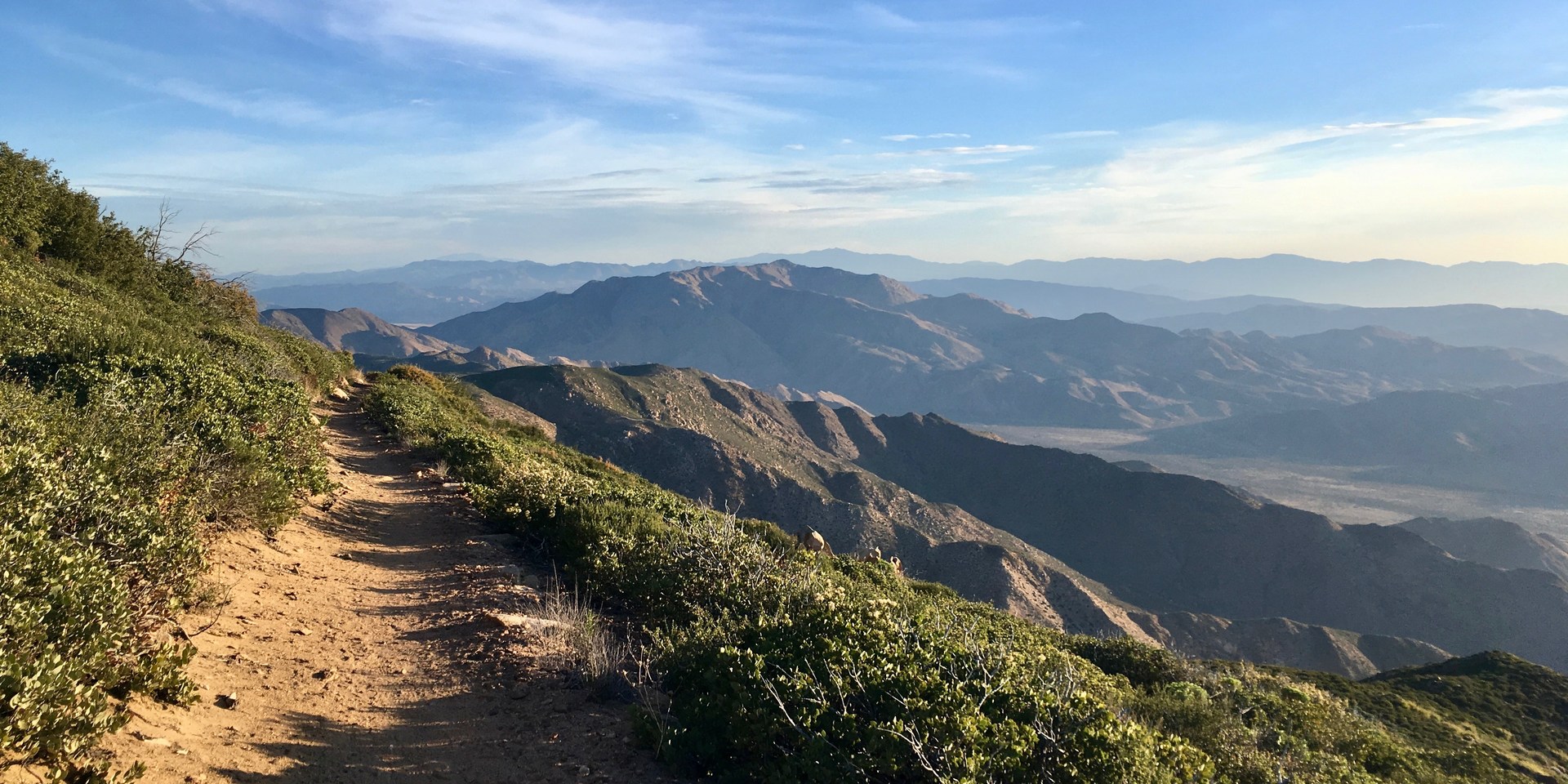You are here
The Pacific Crest Trail is quickly becoming one of the most popular treks in America. Stretching 2,650 miles from Mexico to Canada, it runs through some of the most spectacular scenery in the west including six national parks, 25 national forest units, and 48 federal wilderness areas. The PCT truly has it all, from the hot and desolate desert of southern California to the majestic 14,000-foot peaks of the Sierra Nevada and the dense forest and rocky volcanoes of Oregon and Washington.
The first known proposal for a trail running from Mexico to Canada came in 1926. After years of exploration and advocacy, the PCT was officially designated as a National Scenic Trail in 1968. It wasn’t until 1993, however, that the trail was officially completed and a “golden spike” ceremony was held in southern California. Today the trail can be a very busy place. Over 6,000 permits were issued in 2017, with over half of those being northbound thru-hike permits. While it can be hard to find the solitude one may expect on a national scenic trail, hiking with others can be a very rewarding experience; camaraderie is quickly formed with other hikers as you embrace the joys and struggles of thru-hiking together.
If you are planning a thru-hike, be sure to secure a permit well in advance. If you are only planning a short trip, refer to the PCTA to determine if a permit will be necessary (it likely won’t be).
The PCT is divided into 29 sections. In this guide we’ll be looking at California Section A, Campo to Warner Springs. Stretching 109.5 miles, this section will make or break many a thru-hiker’s dreams. One of the biggest challenges hikers face in the desert is the lack of water sources. Waterless stretches of up to 30 miles exist, and you need to plan ahead and carry an appropriate amount of water. An extremely useful resource for determining reliable water sources is the PCT Water Report. Please note that, while reliable water caches do often exist during thru-hiker season, it is never wise to rely solely on a cache.
California Section A, Campo to Warner Springs
The trail starts just south of the town of Campo, California. From the southern terminus it is a fairly easy hike until the climb out of Hauser Creek at mile 15.4. Hikers have been known to get into trouble around this area; if you arrive in the heat of the day or run low on water, it may be wise to save this climb until the cooler temperatures of evening or even the next morning. Once you’ve made it up and out of Hauser Creek, the next stop is Lake Morena County Park. Hikers often spend either their first or second night here. There is also a small malt shop in town that offers a supplemental resupply option as well as burgers, pizza, and (you guessed it) malts.
As you leave Lake Morena the desert scenery keeps getting more and more beautiful. A few miles before Mount Laguna, the desert gives way to pine forest, which comes as a welcome surprise. Mount Laguna is the first town of reasonable size that north bound (NoBo) hikers reach. There is a restaurant, a post office, a campground, lodging, and a general store. A sizable hiker box can be found at the store, and this is a good place to leave behind anything you don’t want to carry to Canada!
A few miles after leaving Mount Laguna you’ll be met with the first jaw-dropping views of the trail. The next town is Julian. Although not directly on trail, it is an easy hitch from Scissors Crossing to town, where free pie and cider await. Julian is a moderately sized town that offers resupply and lodging options.
It is a steep and hot climb out of Scissors Crossing. The trail traverses the side of the mountains for a while, and it can be quite an enjoyable section. The first water north of Scissors Crossing is located at the Third Gate Cache (mile 91.2). While relying solely on a cache is never wise, most hikers know this to be a reliable cache.
After Barrel Springs (mile 101) you’ll notice the landscape start to change. Gorgeous open meadows offer a welcome change of scenery. You’ll notice several rock outcroppings within the meadows. One of these is Eagle Rock, which is aptly named because it is shaped just like a bird.
After Eagle Rock, it won’t be long until you reach the small town of Warner Springs. The community center here is very welcoming to hikers. There is space to camp, restrooms, and even a small building open day and night with a couch, kitchen, and hiker box. Do-it-yourself laundry and bucket showers are available, as well as a small store with essential items for sale. There isn’t much in town apart from a post office, restaurant, and gas station mini mart. Many hikers tend to overestimate how much food they’ll eat; if you'll be mailing yourself a resupply box here, it is recommended to mail less food than you think you’ll need - you’ll likely be able to do a partial resupply from the hiker box (one of the largest on trail) and from the gas mart/community center store if needed.
Remember to always practice Leave No Trace principles, pack appropriate gear, and to be prepared both physically and mentally. Happy Trails!
More PCT Guides
Logistics + Planning
Current Weather: Powered by Dark Sky
























Comments
Sign In and share them.